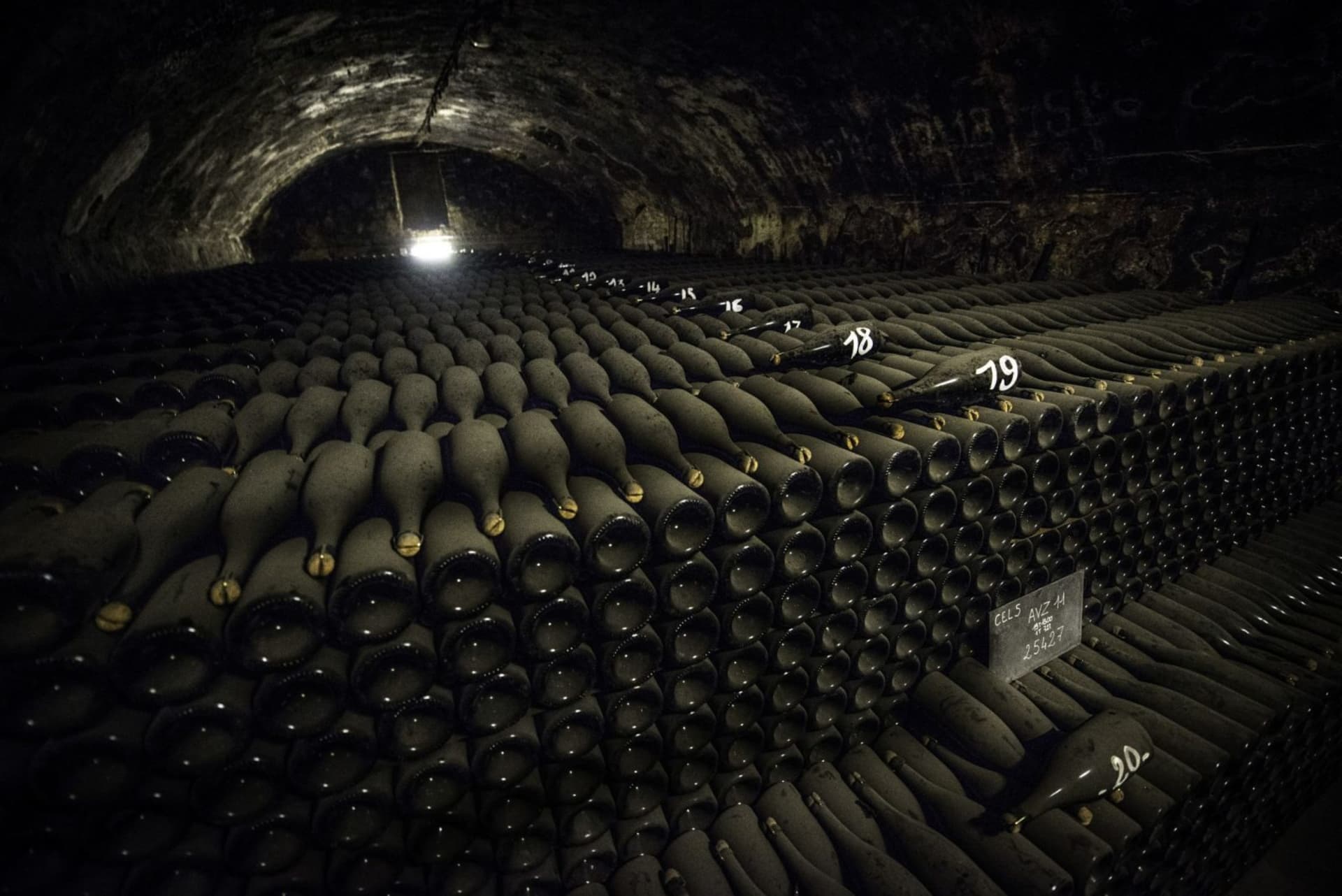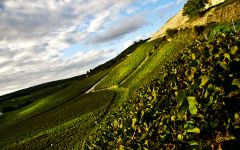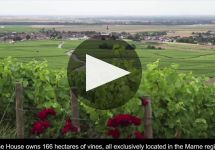Bollinger Brut Special Cuvee
- Decanter
-
Wine
Spectator -
James
Suckling -
Jeb
Dunnuck -
Wine &
Spirits -
Robert
Parker
Most Gifted




Product Details
Your Rating
Somm Note
Winemaker Notes
A golden color, distinctive of black grape varieties. Very fine bubbles. On the nose, it has a beautiful aromatic complexity, ripe fruit, and spicy aromas, with hints of roasted apples, apple compote, and peaches. On the palate, there is a subtle combination of structure, length, and vivacity. The bubbles are like velvet. Flavors of pear, brioche and spicy aromas, notes of fresh walnut.
Pair with all fish, especially sushi and sashimi, shellfish such as shrimp, prawns, crayfish and grilled lobster, poultry and white meat, cashews, parmesan or prosciutto.
Professional Ratings
-
Decanter
If it’s good enough for James Bond, it’s good enough for you. Bollinger Champagne has made a number of cameos in James Bond films over the year. This non-vintage Special Cuvée is an example of a classic Champagne done well. Notes of marzipan on the nose and the palate give toastiness and leesy notes, specifically sourdough. It’s classic for a reason and would only elevate any table it finds itself on.
-
Wine Spectator
Fine and seamless, with mouthwatering acidity well-meshed with a rich range of crème de cassis, poached apricot, gingerbread and almond extract flavors, plus accents of fleur de sel, Meyer lemon peel and star anise. Long and lively on the creamy finish.
-
James Suckling
Lovely density and a fine-bubble texture. Dried apple and apricot with hints of dried flowers. Medium to full body. with medium-rich fruit. Spice, zest and ginger character. Usually 10% in barrel. 60% pinot noir, 25% chardonnay and 15% pinot meunier. About 40% reserve wine kept in magnums. Always really well done.
-
Jeb Dunnuck
A rich though youthful golden hue, the NV Champagne Special Cuvee Brut is classic and ripe with lush, rounded, and complex aromas of golden apricot, hazelnut, wet stone, and black cherry. Made with 45% of the wine coming from the 2019 vintage, with 55% reserve wine, it’s full-bodied yet elegant and light on its feet, with a ripe and luxurious feel and just a hint of warmth on the finish. The mousse is refined and rounded. Long on the palate, it's inviting now but will have plenty of life ahead of it if stored property. This exceptional cuvee with its distinctive personality continues to be one of the best entry wines to the range from this house and is a benchmark wine for them.
-
Wine & Spirits
A vinous Champagne, this has pinot-noir depths of flavor, the structure enhanced by barrel-fermented reserve wines. Youthfully blunt in its power, this will benefit from a year in the cellar, when it can settle into its dry mineral savor and hazelnut grace.
-
Robert Parker's Wine Advocate
Like its rosé counterpart, the latest release of Bollinger's NV Brut Special Cuvée is showing especially well, bursting from the glass with aromas of honeyed apples, crisp stone fruit, buttery pastry, ripe lemons and fresh walnuts. Medium to full-bodied, fleshy and vinous, with a deep core of beautifully ripe fruit, racy acids and a pillowy mousse, it's a charming, characterful wine that proves that Special Cuvée is firmly back where it belongs.









In 1829, Champagne Bollinger introduced an instantly recognizable, dry, toasty style that connoisseurs around the globe have coveted ever since. Six generations of the Bollinger family have maintained that trademark style, and Bollinger is one of the rare Grande Marque houses to be owned, controlled and managed by the same family since it was founded.
With 399 acres of vineyards situated in the best Grands Crus and Premiers Crus villages, Bollinger relies on its own estate for nearly two-thirds of its grape requirements, including the Pinot Noir that gives its Champagne its distinctive roundness and elegance. Bollinger is one of a select few houses that can control the quality of its grape supply so carefully.
Bollinger is renowned for its stringent quality standards. It adheres to traditional methods, including individual vinification of each marc and cru, barrel fermentation (it is the last Champagne house to employ a full-time cooper) and extra-aging on the lees prior to disgorgement.
Members of the British Royal Court were among the first to embrace Bollinger’s unmistakable quality, and Queen Victoria made Bollinger the exclusive purveyor to the Court by Royal Warrant in 1884. Besides royalty, loyal devotees have included heads of state, celebrities and even famous fictional characters: Agent 007, James Bond, demands the exclusive Champagne Bollinger.

A term typically reserved for Champagne and Sparkling Wines, non-vintage or simply “NV” on a label indicates a blend of finished wines from different vintages (years of harvest). To make non-vintage Champagne, typically the current year’s harvest (in other words, the current vintage) forms the base of the blend. Finished wines from previous years, called “vins de reserve” are blended in at approximately 10-50% of the total volume in order to achieve the flavor, complexity, body and acidity for the desired house style. A tiny proportion of Champagnes are made from a single vintage.
There are also some very large production still wines that may not claim one particular vintage. This would be at the discretion of the winemaker’s goals for character of the final wine.

Associated with luxury, celebration, and romance, the region, Champagne, is home to the world’s most prized sparkling wine. In order to bear the label, ‘Champagne’, a sparkling wine must originate from this northeastern region of France—called Champagne—and adhere to strict quality standards. Made up of the three towns Reims, Épernay, and Aÿ, it was here that the traditional method of sparkling wine production was both invented and perfected, birthing a winemaking technique as well as a flavor profile that is now emulated worldwide.
Well-drained, limestone and chalky soil defines much of the region, which lend a mineral component to its wines. Champagne’s cold, continental climate promotes ample acidity in its grapes but weather differences from year to year can create significant variation between vintages. While vintage Champagnes are produced in exceptional years, non-vintage cuvées are produced annually from a blend of several years in order to produce Champagnes that maintain a consistent house style.
With nearly negligible exceptions, . These can be blended together or bottled as individual varietal Champagnes, depending on the final style of wine desired. Chardonnay, the only white variety, contributes freshness, elegance, lively acidity and notes of citrus, orchard fruit and white flowers. Pinot Noir and its relative Pinot Meunier, provide the backbone to many blends, adding structure, body and supple red fruit flavors. Wines with a large proportion of Pinot Meunier will be ready to drink earlier, while Pinot Noir contributes to longevity. Whether it is white or rosé, most Champagne is made from a blend of red and white grapes—and uniquely, rosé is often produce by blending together red and white wine. A Champagne made exclusively from Chardonnay will be labeled as ‘blanc de blancs,’ while ones comprised of only red grapes are called ‘blanc de noirs.’
